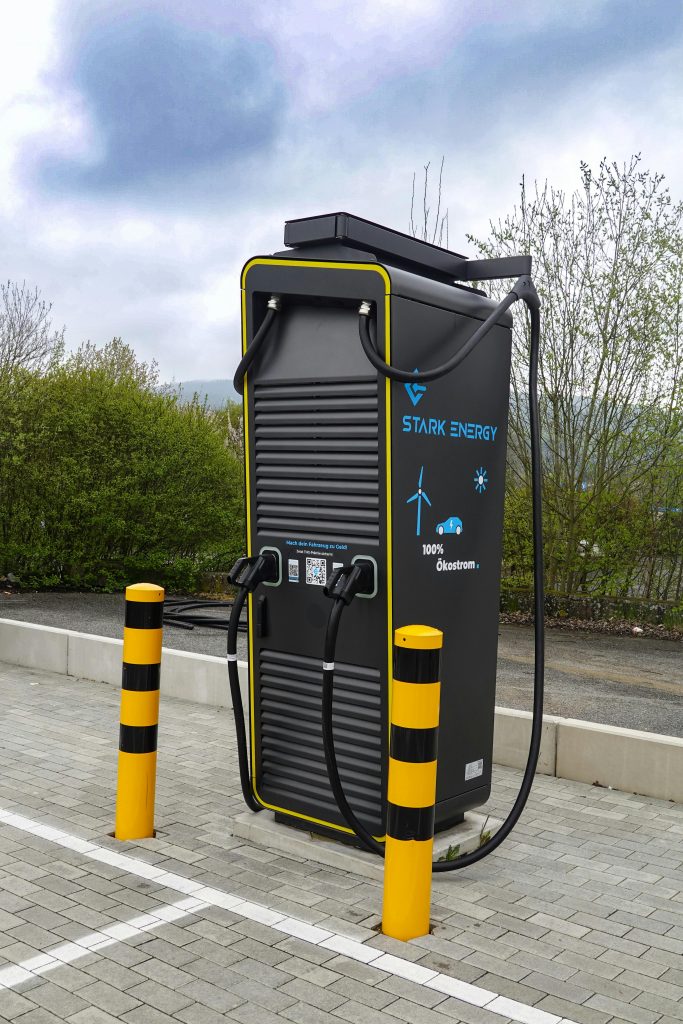As the world shifts toward sustainable energy solutions, solar charging for electric vehicles (EVs) is emerging as a game-changer. By harnessing the power of the sun, EV owners can reduce their carbon footprint, cut energy costs, and enjoy greater energy independence. With advancements in solar technology and increasing affordability, 2025 is set to be a landmark year for solar-powered EV charging. This guide explores everything you need to know about solar charging for electric vehicles, from how it works to the best systems available today.
How Solar Charging for EVs Works
Solar charging for electric vehicles involves converting sunlight into electricity using photovoltaic (PV) panels, which then charge your EV’s battery. Here’s a breakdown of the process:
- Solar Panels: Installed on rooftops, carports, or ground-mounted systems, these panels capture sunlight and convert it into direct current (DC) electricity.
- Inverter: The DC electricity is converted into alternating current (AC), which is compatible with most home and EV charging systems.
- EV Charger: The converted electricity is sent to your EV charger, replenishing your vehicle’s battery.
- Battery Storage (Optional): Some systems include solar batteries to store excess energy for use during cloudy days or nighttime charging.
By integrating solar power with EV charging, you can significantly reduce reliance on the grid while lowering your energy bills.
Benefits of Solar-Powered EV Charging
Switching to solar charging for your electric vehicle offers numerous advantages:
1. Cost Savings
Generating your own electricity means fewer trips to public charging stations and lower utility bills. Over time, the savings can offset the initial investment in solar panels.
2. Environmental Impact
Solar energy is 100% renewable, reducing greenhouse gas emissions compared to fossil fuel-based electricity. Charging your EV with solar power makes your commute truly zero-emission.
3>3. Energy Independence
With a solar-powered charging setup, you’re less vulnerable to fluctuating energy prices and power outages, especially if you include battery storage.
4. Increased Home Value
Homes equipped with solar panels and EV charging infrastructure often see a boost in property value, appealing to eco-conscious buyers.
Top Solar Charging Solutions for EVs in 2025
As solar technology evolves, several innovative solutions are making it easier than ever to charge your EV with sunlight. Here are the top options for 2025:
1. Home Solar Panel Systems
Installing rooftop solar panels is the most common way to power your EV sustainably. Modern systems are more efficient and affordable, with options for grid-tied or off-grid setups.
2. Solar Carports
These structures combine shaded parking with solar panels, providing dual benefits: protecting your vehicle from the elements while generating clean energy.
3. Portable Solar Chargers
Ideal for road trips or remote locations, portable solar chargers offer flexibility. While they charge slower than fixed systems, they’re a great backup option.
4. Vehicle-Integrated Solar Panels
Some newer EV models come with built-in solar panels on the roof or hood, trickle-charging the battery while parked. While not a full replacement for plug-in charging, they extend range.
Key Considerations Before Going Solar
Before investing in solar charging for your EV, keep these factors in mind:
- Sunlight Availability: Assess your location’s solar potential. Areas with more sunlight will generate more energy.
- System Size: Ensure your solar array can meet your EV’s charging demands. A typical EV requires 10-12 kWh per 100 miles.
- Upfront Costs: While prices have dropped, solar installations still require an initial investment. Look for incentives like tax credits or rebates.
- Battery Storage: Adding a battery lets you store excess solar energy for later use, maximizing efficiency.
- Charging Speed: Level 2 chargers (240V) are ideal for home solar setups, offering faster charging than standard outlets.
The Future of Solar-Powered EV Charging
By 2025, solar charging for EVs is expected to become even more accessible and efficient. Emerging trends include:
- Bidirectional Charging: EVs with vehicle-to-grid (V2G) technology can feed excess solar power back into the grid, earning credits.
- Thin-Film Solar Panels: Lightweight and flexible, these panels could be integrated into more surfaces, including car bodies.
- Smart Charging: AI-powered systems will optimize solar charging based on weather forecasts and energy usage patterns.
As solar and EV technologies converge, the dream of fully sustainable transportation is becoming a reality.
Conclusion
Solar charging for electric vehicles is a smart, eco-friendly solution that aligns with the global push toward renewable energy. Whether you opt for rooftop panels, a solar carport, or portable chargers, harnessing the sun’s power can slash your energy costs and reduce your carbon footprint. With 2025 bringing even more advancements in solar efficiency and affordability, there’s never been a better time to make the switch. By planning carefully and choosing the right system, you can enjoy the benefits of clean, solar-powered driving for years to come.
